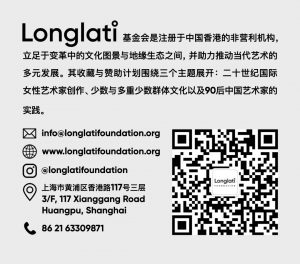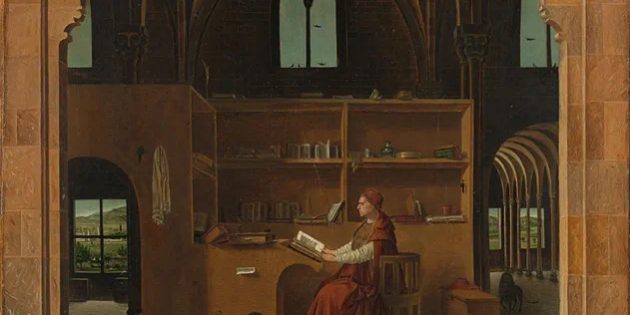
Antonello da Messina (1456–1479), Saint Jerome in his Study, circa 1475, oil on limewood, 45.7 x 36.2 cm © The National Gallery, London
Shanghai experienced a sudden upheaval in the past April, with the unexpected citywide lockdown seemingly becoming the new normal. The entire city found itself reluctantly trapped in uncertainty.
Four members of the Collecting Committee at the Longlati Foundation, Chen Jiaying, Chen Xi’an, Li Suchao, and Yuan Jiawei, initiated this sharing session to discuss their respective work interfaces and lifestyles during the closed-loop management process. They aimed to rethink their relationship with the space they occupy and explore the extension of self within it.
Drawing on the spatial concept proposed by German philosopher Martin Heidegger in his essay “Building Dwelling Thinking,” which emphasizes that individuals must understand their “existence” and “dwelling” states through their “sojourn” in space, this sharing session takes intermittent “residence” as its central theme, encompassing constructive “building” and everyday “dwelling.” It traces these aspects back to everything accessible during this period and their respective domains.
This sharing session also invited representatives from galleries collaborating with the Longlati Foundation in Shanghai, including Cai Junjun, Francois Ho, Wang Ruolin, Zhou Bingxin, and Zhang Zheyuan, to join in the dialogue.
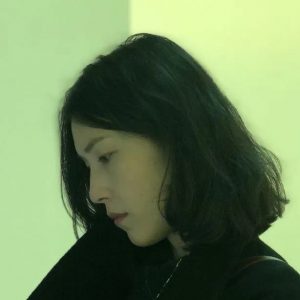
Jenny CHEN Jiaying
Longlati Foundation
Member of Writers’ Acquisition Committee
As Isak Dinesen once said, “Write a little every day, without hope, without despair.” During the lockdown period, my work routine was certainly affected. Although I continued to work on my thesis in the mornings and handle small articles and art projects in the afternoons, my state of mind couldn’t calm down as easily as before. I believe that the challenges we face during this restricted social interaction have resulted in societal issues that affect us all. Certainly, the manifestations of resource inequality vary, but the issue of livelihood has perhaps never been so concrete and widespread in this modern metropolis. The need for food and labor has been constantly approaching us as natural, corporeal beings with finite existence. And when those events, which are difficult to accept, understand, and digest, hit the internet one by one, the only consolation I have is that my doctoral thesis provides some relief to a certain extent. I have mentioned elsewhere that my research focuses on “Body Theory from a Feminist Perspective,” which attempts to connect the threads from Beauvoir and Butler to new materialism. This framework, from existential phenomenology’s attention to the embodied subject, to the body as both an object inscribed with power and a site of performance, and further to the body-material as a vital force, has permeated my everyday life in the years of the pandemic as a tangible bodily experience. In my recent presentations and published articles, I have also attempted to address the issues arising from the extension of this framework into the realm of virtual embodiment and digital intimacy. In my leisure time these days, I have been focusing on group cooking, sharing resources, and caring for those around me, so I haven’t had the chance to read much. However, any book by Foucault would probably be an (in)appropriate read at the moment.
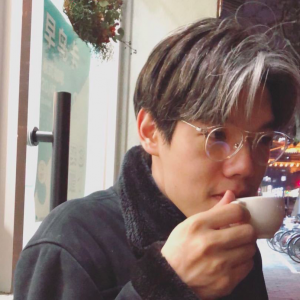
CHEN Xi’an
Longlati Foundation
Member of Writers’ Acquisition Committee
Actually, most people had already experienced a similar work-from-home scenario in early 2020. In that year and the following one, disasters of a similar nature were encountered worldwide. Comparatively, what we are currently experiencing is at best a Schrödinger’s work-from-home state: in April, in Shanghai, I am both present and absent. Being present merely involves staring at the screen, trying to synchronize my experiences with the rest of Shanghai—panic buying, rumors, and multiple versions of the truth. However, when it comes to the work on my desk and the direction of my reading, aside from a change in pace (almost stagnant), the direction remains unaffected by the city’s lockdown.
We have all experienced the events of 2022 countless times. In such circumstances, perhaps what can truly be shared is a repetition of what happened in 2020:
On February 3, 2020, science fiction writer Han Song posted an early Weibo post, attempting to awaken the critical consciousness of the Chinese people. He wrote that many people were busy doing one thing during this period—taking screenshots of various articles in their social media feeds. These articles often disappeared too quickly, with some disappearing at a speed exceeding that of light… which made people feel that science fiction was rubbish.
He continued, “I don’t think the epidemic will bring any new inspiration to science fiction. Wuhan’s scene has been written about in science fiction long ago, with many details being identical. But what’s the use? The bigwigs sitting on the podium in Wuhan and Huanggang probably haven’t even read them. This reflects that deep down, everyone has always regarded science fiction as rubbish.” Han Song’s depiction of this disaster differs from mainstream Chinese writers. In a self-deprecating tone, he said that Chinese science fiction, except for temporarily gaining popularity during several social crises, mostly exists in the realm of rubbish. In the conclusion, he even apologizes for his “reptilian-complex brain” that doesn’t conform to mainstream values. I don’t know if people in the science fiction community share the same sentiment today. Regarding this event that is far from being a natural disaster, apart from appropriating Han Song’s sentiments from 2020, the least likely feeling to arise from this Schrödinger’s dwelling state is that of mourning.
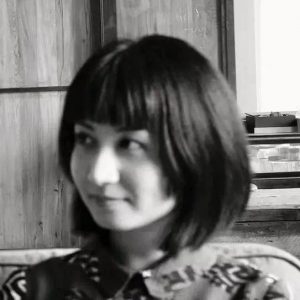
LI Suchao
Longlati Foundation
Member of Writers’ Acquisition Committee
So far, my residential community has been under lockdown for over a month, plus one week. To be honest, recent absurd events have made it difficult for me to focus on my usual work with the same peace of mind as before. These events have brought unprecedented impact and changes to the lives, observations, and reflections of every resident in this city. With all the venues and institutions in Shanghai temporarily closed, my work as an art critic and writer has come to a near halt. The “Flower Hall Project” I am involved in has also temporarily closed its doors. However, my research-related work continues, and the days spent at home have given me more time to read and learn. I have attended several online courses and lectures, some of which are highly relevant to my recent research interests. It is a small consolation that today’s media technology allows us to share flashes of knowledge with many others, especially in the anxious state of lockdown and the constant overflow of negative social emotions.
According to Martin Heidegger, “Building and thinking both belong to dwelling (Wohnen).” Through the activity of “building” (Bauen), which is a human endeavor, we contemplate dwelling as a state of “being somewhere,” ultimately pointing to the essential relationship between thinking and being. Interestingly, during this period, almost half of my day is spent contemplating trivial matters that I rarely paid attention to before, such as what to eat for the next meal, what groceries are needed, how to purchase and prepare food, and how to store it. These are mundane tasks that are necessary for basic human survival. The Post-Anthropocene is a major focus of my recent research and interest. It refers to a broad concept of symbiotic relationships that transcend excessive human focus. It offers a non-anthropocentric, diverse, and differentiated perspective, inspiring us to reexamine the complex network of relationships between humans and other non-human organisms, including animals, plants, pathogens, as well as the environment, planets, and technology. It presents a possible approach for us to face the new ontological issues involving diverse human communities, viruses, food, politics, media, technological intermediaries, and other hybrids that are entangled in the present moment.
Recently, I have been reading several books. Aside from those related to my research work, I would like to share a more intriguing science fiction novel called “Snow Crash” by Neal Stephenson. The book was published in 1992, but reading it today, one is amazed at how many of its imaginings align with our current reality. The story is set in a fragmented America of the 21st century, where cities are divided into autonomous city-states. The narrative revolves around a virus called “Snow Crash” that spreads in both the virtual and real worlds. It is presented from the perspective of an Asian protagonist named Hiro Protagonist and covers various fields, including computer science, Sumerian culture, religion, archaeology, linguistics, philosophy, biology, and anthropology. The book not only introduces the concept of the “Metaverse” but also connects seemingly independent discourses and disciplines, weaving them into a complex and interconnected network. Moreover, its exceptional diversity is reflected in the characterization of the protagonist’s Asian identity and another female character, which was quite rare in mainstream Western novels of the early 1990s. I believe the essence of the book gradually unfolds in the second half. It satisfies the enthusiasts of cyberpunk, but it is also a literary work of a “post-humanity” nature.
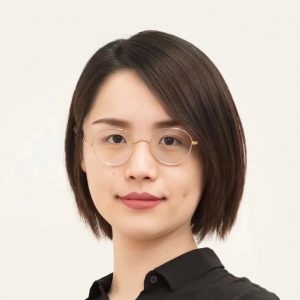
Evonne YUAN Jiawei
Longlati Foundation
Head of Writers’ Acquisition Committee
In my past experiences, there has never been a moment where confidence has been completely lost due to non-subjective factors. It is also unimaginable how long it will take to rebuild this confidence, or whether this confidence will remain as something worth relying on.
Coincidentally, I have recently been going through some transformations and transitions. During the stay-at-home period, I have reorganized my work logic and devoted myself more persistently to reading and writing. This includes preparing texts for two spring exhibitions of the Longlati Foundation, which were originally supposed to be open to the public. It is during this opportunity that I have delved into many topics related to institutional discourse and exhibition history.
Uncertain whether it is for a sense of security or concentration, I have chosen a very cramped and narrow corner to work, placing the necessary production materials within reach as much as possible. If possible, I hope to have a secluded study room that allows me to better escape the anxiety of the external world and information.
On the other hand, while having to engage in domestic labor, I once again opened the exhibition catalog of the British Pavilion at the 2016 Venice Architecture Biennale titled “Home Economics: Five New Models for Domestic Life.” I did this to personally understand the different household (economic) models presented through five time scales—hours, days, months, years, and decades. The community in which I live quickly fell victim to the outbreak of the current pandemic, revealing the structural problems of today’s housing market. Although it does not compare to the urgency of the pandemic itself, the frequently mentioned issue of infrastructure has also been a key term in my personal research plans.
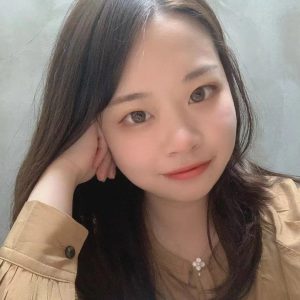
CAI Junjun
David Kordansky Gallery, Director of Asia
For a gallery staff member, the state of staying at home feels like going back to the heyday of online socializing. Email and WeChat have become the most important tools for work, along with Zoom. Although there are restrictions on travel, the efficiency of work has not been significantly affected by staying at home. At this moment, there is also reflection on the significance and value of numerous group social activities that used to take place. As someone who tends to be more introverted, there haven’t been many changes in terms of work status, but mentally, there is a greater desire to reduce anxiety because, during these times, changes tend to occur faster than planned. Currently, the main research topic at work is “How private collectors purchase artworks by popular artists in galleries.”
Here are three recently read books that are quite fitting for the current situation: “The Origins of American Inequality,” “Lost Satellite: A Journey into the Heart of Central Asia,” and “The Elephant in the Room.”
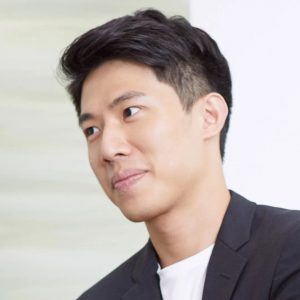
Francois Ho
Almine Rech Gallery, Director of Shanghai
Working from home involves handling emails, attending online meetings, and occasionally having phone conversations with clients. So far, the inability to socialize hasn’t affected the work itself, except for the postponement of physical exhibitions. However, there has been some fluctuation in mental state and the work rhythm has been somewhat scattered. Recently, a significant amount of time has been devoted to planning this year’s art exhibition, selecting pieces, and promoting collaboration projects with several art galleries, including Jing Art in Beijing and Gallery Week.
I recently read a book that compiles the content of elective courses on continental philosophy at Yale University. The author of the book is Frank M. Turner. It can be considered a popular science book on philosophy, but it also contains some subjective and clever interpretations and understandings by the author. Regardless of one’s familiarity with the history of philosophy, it provides some nourishment for the mind.

WANG Ruolin
Almine Rech Gallery, Director of Shanghai
For me personally, working from home has actually increased efficiency, although the working hours have become more flexible. Fortunately, the work with the international team continues as usual, and my tasks are similar to usual: handling administrative work and engaging in a significant amount of written and phone communication. The office mode during the pandemic has had little impact on administrative tasks, allowing me to concentrate more on them. However, the impact on social communication work is evident.
Essentially, working from home has not created a different working environment but rather forced a shift in the emphasis and rhythm of work. This has introduced significant uncertainty to future events such as art exhibitions and multiple projects that were originally planned. Farah Atassi’s solo exhibition, which was scheduled to open in April at a physical space in Shanghai, can only be presented in the form of an online virtual gallery. Spending more than a month at home has once again made me realize the immense influence of the living environment on one’s personal state of being. The comfort of life serves as a subtle entry point, allowing me to observe the diverse stories of individuals in each neighborhood of Shanghai, a city where class divisions are relatively prominent.
I recently finished reading “Ten Years in Germany” by Ji Xianlin and “A History of Spicy Food in China” by Cao Yu from Sun Yat-sen University. The former has made me cherish my current life situation even more, while the latter provides an interesting perspective for sociological research.
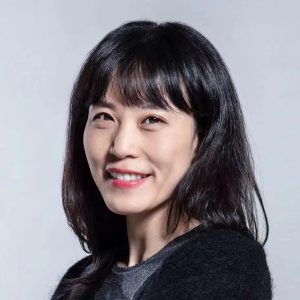
ZHOU Bingxin
Sadie Coles HQ, Director
A one-sentence description of the state of working from home: Daily absurdity.
Daily work has become extremely difficult, with the overall societal environment coming to a standstill, leading to various work obstacles and significant impacts on the mental level. Like many others, I believe we are all in a state of restlessness, anxiety, and unease, where individuals, groups, and even art feel powerless. However, despite this, there are still many projects being communicated and followed up on during this period. Faced with great uncertainty, many colleagues continue to advance projects with a professional and calm attitude.
On the other hand, my work with colleagues in London has not been greatly affected. We still have regular meetings and daily work and communication as usual. We continuously adjust our projects in China based on the pandemic and control situation. Unfortunately, several projects that were being prepared have had to be abandoned or postponed due to the pandemic. Meanwhile, gallery exhibitions in London, Venice, and other places are progressing normally and remain lively and active.
In order to resist the absurdity and hysteria of the world around us, there is a need for powerful spiritual and intellectual works. Therefore, reading, learning, and work itself have become a form of resistance. It is an effort to find one’s position, stance, and engage in reflection within a seemingly collapsed black hole of time and space. Recently, I have also watched several films, including feature-length films and video works by artists. Visual works, which are based on time, provide an alternative time-space structure and offer possibilities beyond reality in this unconventional period of time.
One book I would like to share with everyone is “The Fate of Rome: Climate, Disease, and the End of an Empire” by Kyle Harper. It discusses how nature – unstable climate, solar cycles, volcanic eruptions, deadly epidemics, and the evolution of bacteria and viruses – played a role in the downfall of the Roman Empire, how it triumphed over human ambition, and profoundly shaped the world we inhabit.
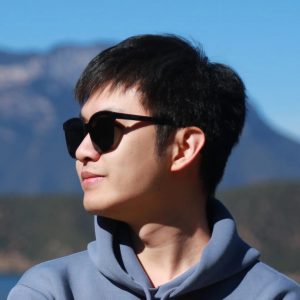
ZHANG Zheyuan
Balice Hertling Gallery, Director of Asia
Actually, I’ve been using work to suppress my emotions. From early March until now, I have intermittently been “staying at home” in Shanghai for about two months. After isolating myself from many worldly desires, I had entered a state of tranquility. However, recently, various information flooding my social media feed quietly shattered that tranquility. The overwhelming empathy made me feel powerless. Nevertheless, “fortunately,” there are many work-related tasks to keep up with.
The two exhibition projects that were originally planned for the end of March in Beijing and mid-April in Shanghai had to be postponed due to well-known reasons. However, the preparations for these projects cannot be neglected. The focus is on textual work related to the exhibitions and the overall coordination of pending matters.
Coincidentally, this work-from-home situation, which brews emotions within the confines of my home, is having a chemical effect on an exhibition I am currently preparing for. In mid-April, the artist Julie Beaufils, represented by our gallery, was invited by the Nanjing Sifang Contemporary Art Museum to curate a group exhibition titled “Inner Dims” in Shanghai’s project space. Although the exhibition has been delayed, while assisting Julie in coordinating the exhibition works, I watched a video montage by Mona Varichon in advance. The video is quite simple; the artist edited all the Instagram stories from the ballet dancers of the Paris Opera during the spontaneous performances of “Swan Lake” on the streets during a strike before Christmas 2019. Originally, it was an image work created through re-creation and grafting of the concept of “appropriation.” However, due to the temporal juxtaposition of the video and the lives of Shanghai residents at this moment, it created an intensely emotional viewing experience. It was the first time I had such a vivid imagination of experiencing an on-site exhibition. Coupled with the exhibition’s theme focusing on the unfamiliar or intimate intimacy that people experience while obtaining information in contemporary life, I truly felt the deep irony from reality. Indeed, Shanghai is a city that comes with its own context.
Before Shanghai is fully lifted from the restrictions, I will most likely continue to assist Julie Beaufils, who is both a curator and participating artist unable to be present, in bringing this exhibition to fruition. In addition to her and the aforementioned Mona Varichon, the other participating artists include Laura Owens, Jacob Eisenmann, Owen Fu, Ser Serpas, Asha Schechter, and Zoe Stillpass. At this point, I can only bury myself in work (and also rush to buy groceries, participate in group purchases, and coordinate nucleic acid testing), while hoping that everything will turn out well. Until tomorrow, let us reunite with art.
